Pros and cons of the solution
5 advantages of vertical gardening in the interior:
- Improved microclimate. Everyone knows that plants absorb carbon dioxide, producing oxygen. A vertical garden is no exception.
- Soundproofing. In addition to CO2, a living wall absorbs excess noise, so the room will become noticeably quieter.
- Space saving. Flowers on the wall are a great way to save space in a room while making it green.
- Automatic temperature and humidity control. It is worth choosing the right number of climbing plants to forget about the air conditioner once and for all: in the heat, flowers emit moisture, which leads to a decrease in the overall temperature in the room.
- Decorativeness. There is no arguing that vertical gardening in an apartment looks very impressive. The composition can replace other decor or complement hanging paintings, clocks.
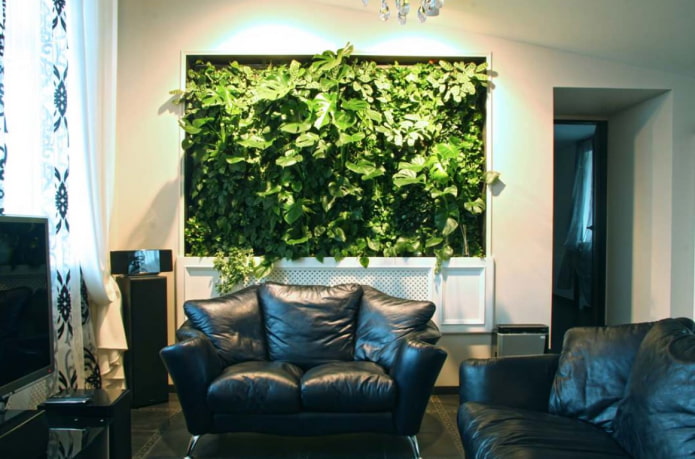
Vertical gardening has few disadvantages:
- Dampness accumulation. To avoid mold, it is enough to choose a dry, warm wall, protect it with a film from the inside, and regulate watering.
- Destruction of the coating. Some types of vines cling directly to the walls, thereby violating the integrity of the decorative cover. To avoid this, the branches should be directed along the mesh or trimmed in time.
- Difficulty in care. Watering, feeding, and replanting the inhabitants of a phytowall is more difficult than with ordinary potted plants.
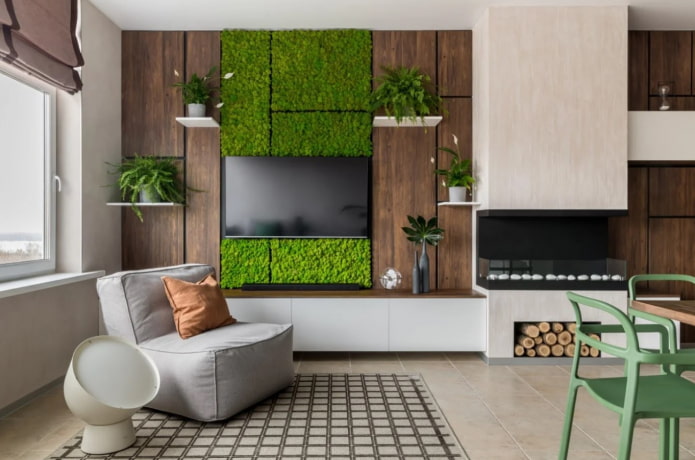
The photo shows a panel of stabilized moss in the living room
Which design should I choose?
How exactly the vertical gardening in the interior will look depends on the chosen system. There are 3 types of designs for vertical growing.
Phytomodules
There are 2 types of modules for vertical gardening of walls:
- A mobile design with an automatic watering system. It comes in different sizes and designs. Used as a dividing screen for zoning or placed against a wall.
- A wall panel with pockets where seedlings are placed. Does not take up much space, suitable for placement above a sofa or bed.
Phytomodules can be either very simple, requiring regular maintenance, or autonomous: they are connected to an outlet and water supply, watering and lighting are regulated independently.
Important! Carefully consider the choice of container material: they can be made of plastic, felt, metal, wood, sisal. Each option has its pros and cons. For example, felt does not rot, but perfectly absorbs moisture and releases it into the air. Plastic is not environmentally friendly, and without drainage holes it can lead to root rot.
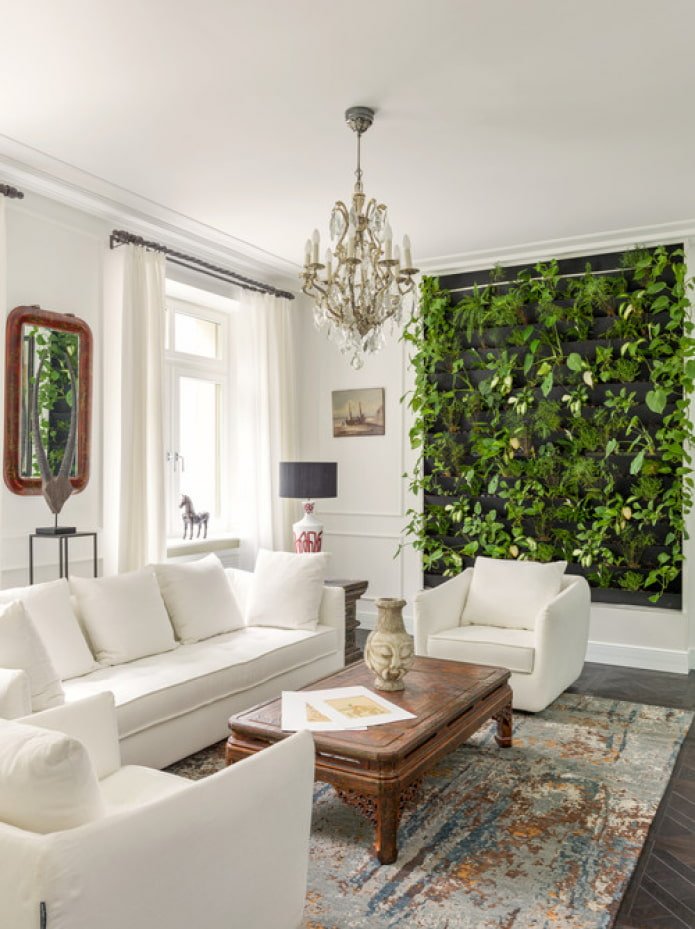

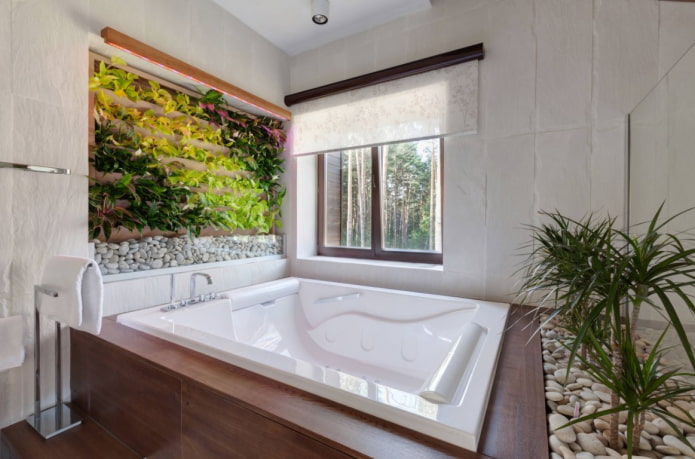
The photo shows an example of phytomodules
Phytopanno
Flower paintings are most often created from stabilized plants (mainly moss) or unpretentious species – succulents, ferns. They can be small – they are convenient to decorate the wall above the desk, or large – half the size of a sofa, for example.
The advantage of a phytopanno is the almost complete absence of soil, so the dirt from it will be minimal – therefore this version of vertical landscaping is often used in kitchens.
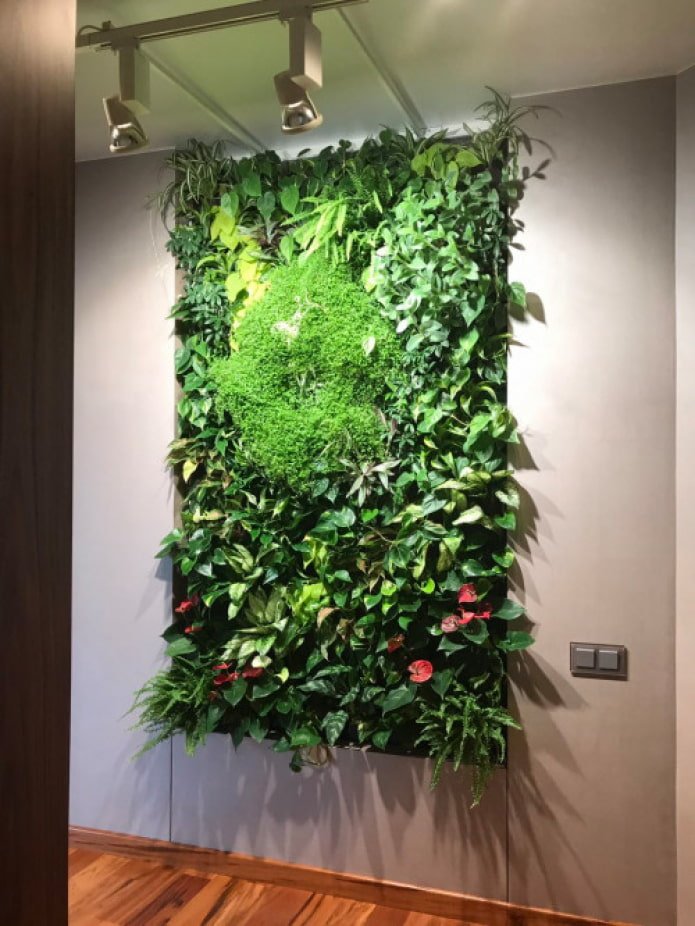
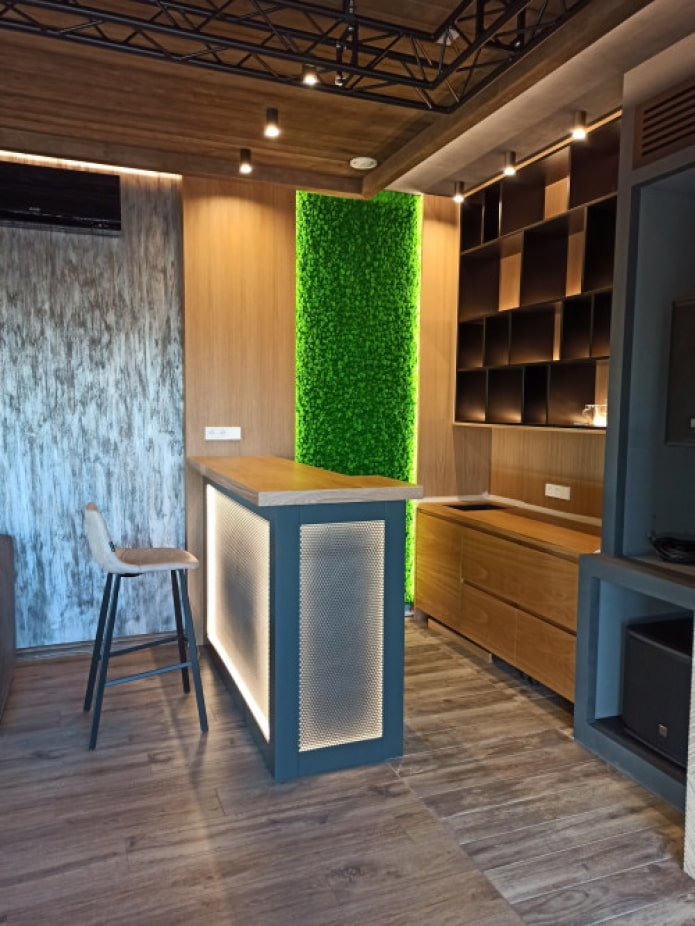
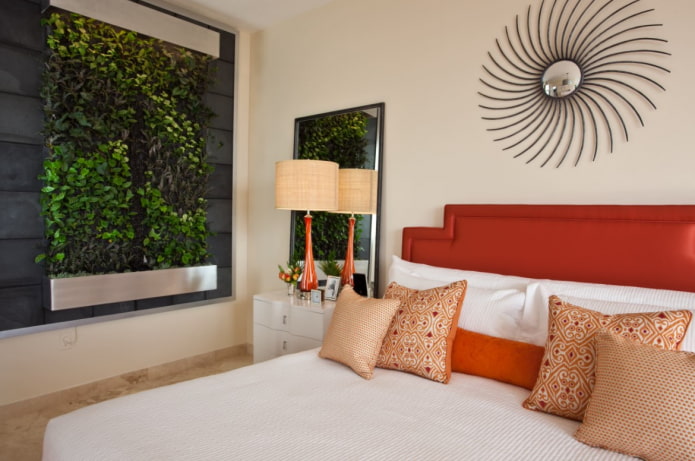
Carpet landscaping
When betting on the scale of vertical landscaping in the interior and creating an entire green wall, be prepared for additional costs in the form of automatic water supply, light control, and a humidity sensor.
It is automation that will help keep the plants safe and sound, guaranteeing them the right conditions for a quality life.
Decorating an entire wall or part of it with greenery is the best way to improve the air quality in the house and enjoy other benefits of a home garden.
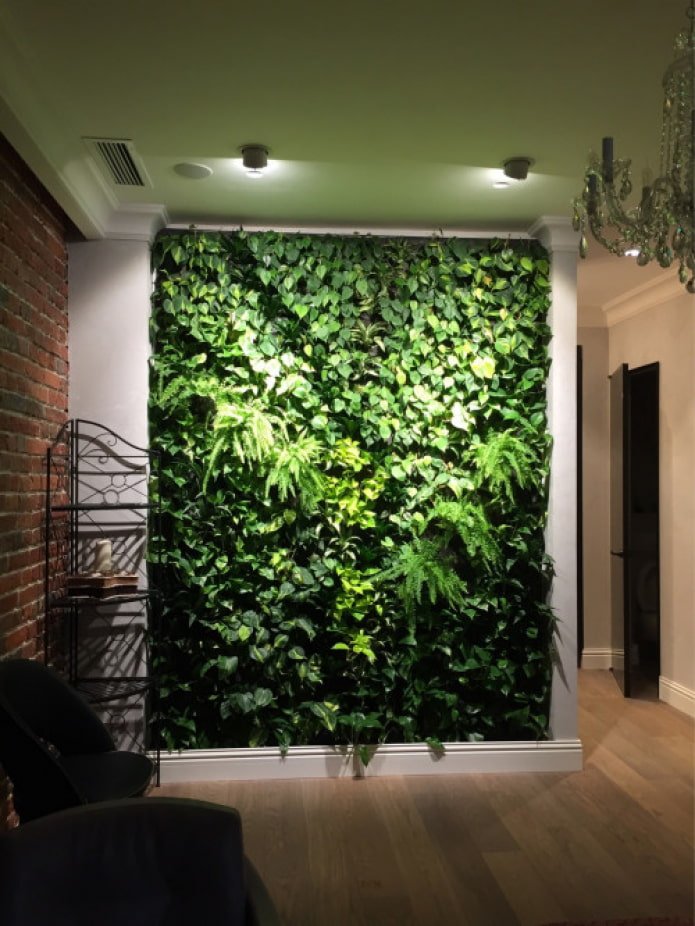
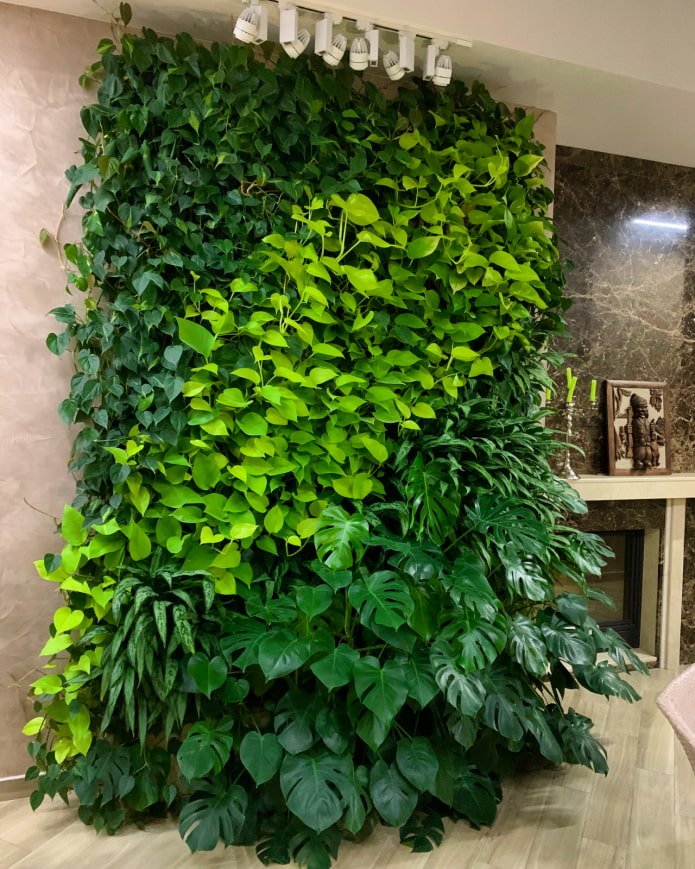
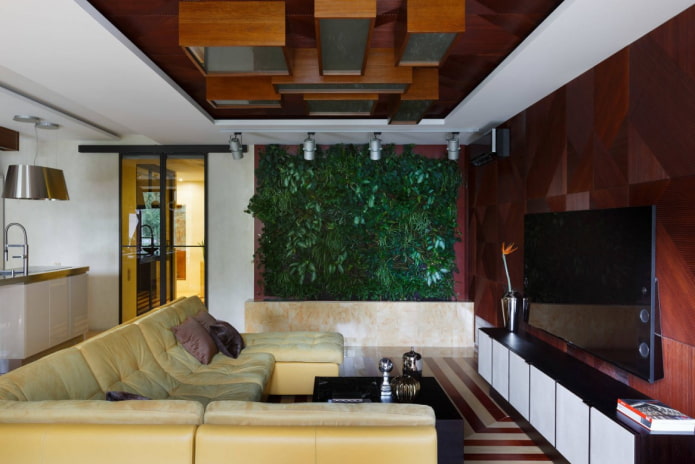
What plants can be used?
All suitable plants can be divided into:
- Decorative foliage.
- Climbing.
- Flowering.
- Unpretentious.
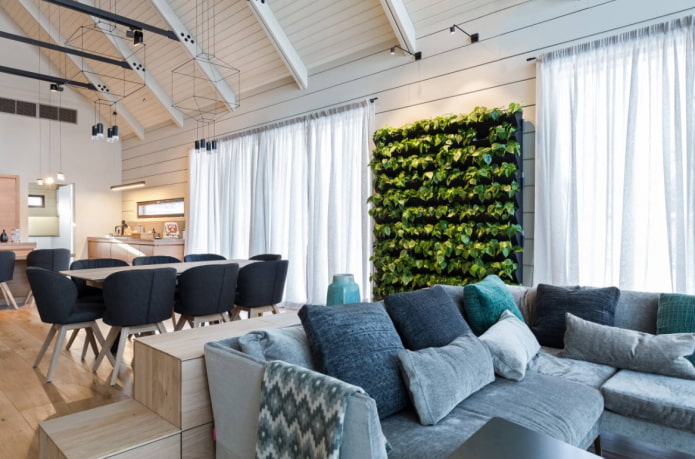
In the photo, the house is decorated with plants in modules
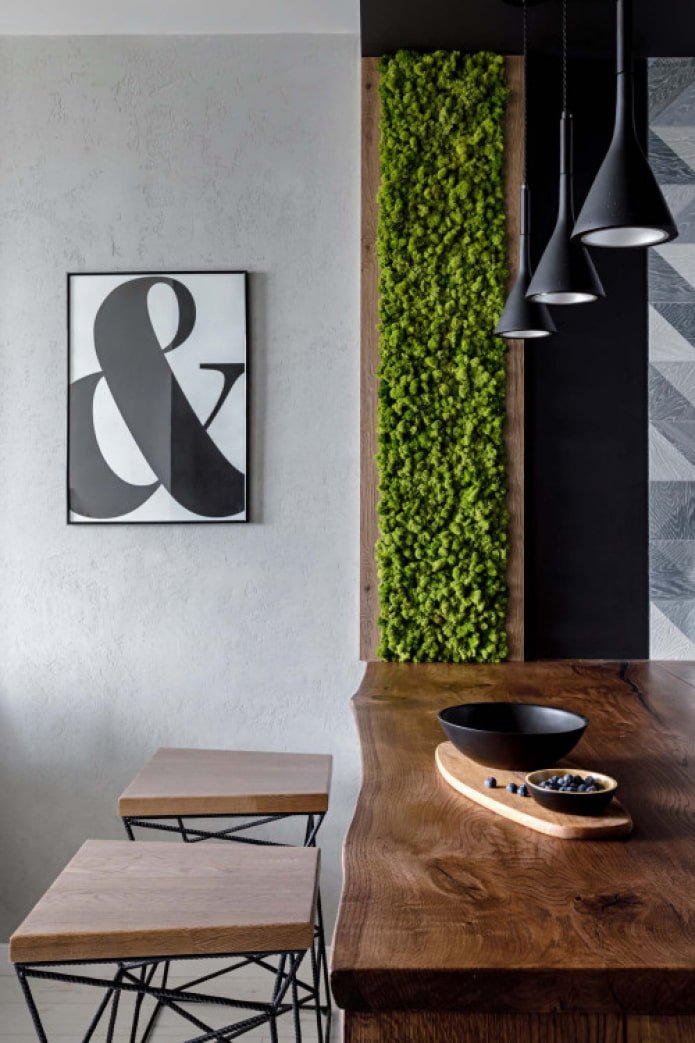

You must choose any type after answering 3 questions questions:
- Are you planning to place it in soil, hydroponics or on a panel? Spoiler: only stabilized moss is suitable for the latter.
- How well lit is the area of the wall that needs to be decorated? Is it opposite the window, to the side of it or in a shaded area?
- Who will plant the plants and care for them? The choice of cuttings depends on the experience of the gardener.

The photo shows moss in the design of the hall in the loft style
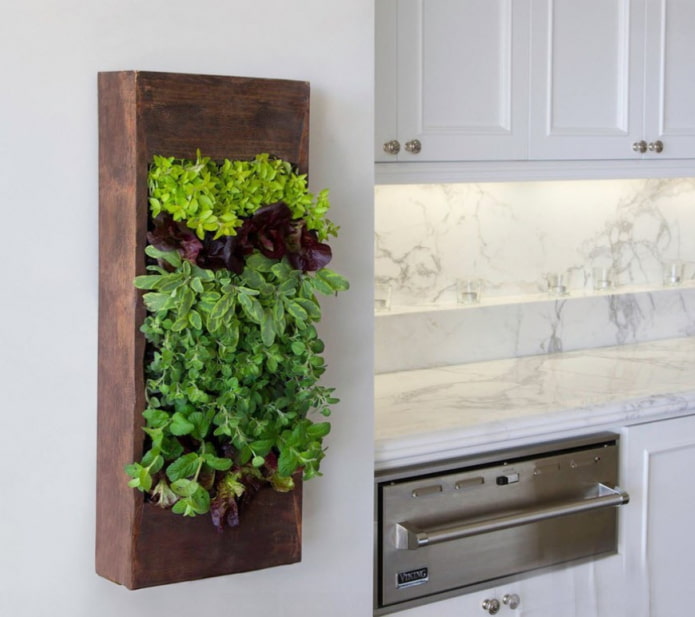
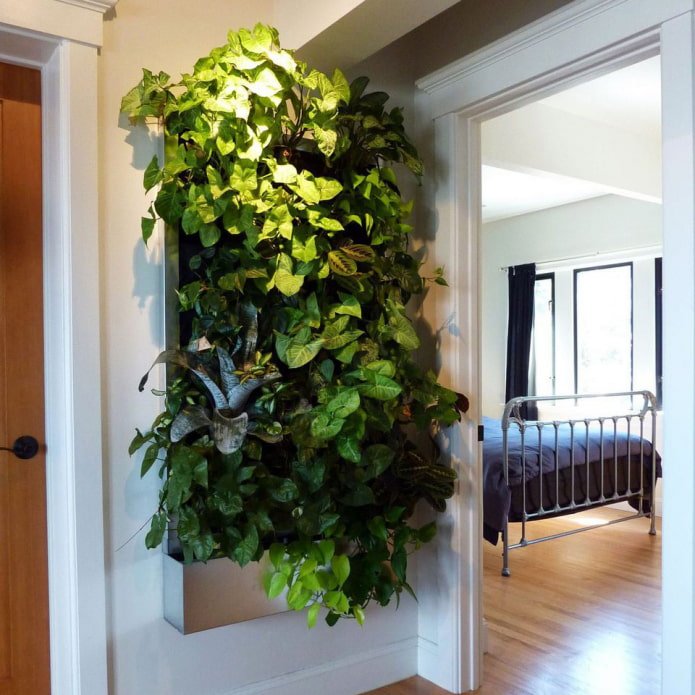
7 suitable options for vertical gardening:
- Scindapsus. The fast-growing liana can be monochromatic (light or dark) or variegated. For dense vertical gardening, it is enough to plant several shoots in a row. It looks great both on its own and in a pair with other green brothers planted nearby.
- Monstera. When planted in the ground, it grows quite quickly, so if you do not want to live in the jungle in a year, choose small-leaved species. An excellent option is punched or oblique.
- Spathiphyllum. A flowering shoot with lush narrow leaves will decorate the wall. Requires special conditions: does not like drafts, needs high air humidity.
- Ivy. By timely guiding and trimming this climbing flower, you can create a beautiful carpet on the wall. For a more decorative look, mix different types: variegated, monochromatic.
- Aglaonema. Large bright leaves and absolute unpretentiousness make it an excellent decorative addition to other plants located vertically.
- Asparagus. A lush flower, the branches of which resemble spruce. Small leaves will perfectly complement the picture created by the large-leaved flowers listed earlier.
- Fern. If you build it into a composition and fix rosettes with carved long leaves in empty spaces, you will be able to achieve a noticeable contrast of textures.
In addition to the listed types, various succulents (ideal for an office) and herbs (an option for a kitchen) are planted in phytomodules.
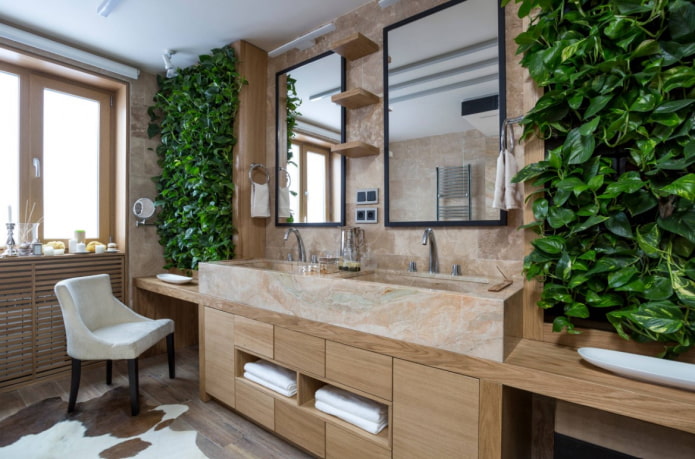
The photo shows scindapsus in the bathroom
How to care for it properly?
When implementing a vertical gardening project in an apartment, it is not enough to simply install the base and plant the plants; they must be regularly cared for. The care process is divided into 4 areas:
- Lighting. Living seedlings need light. If daytime natural lighting is not enough, the phytowall is equipped with additional lamps with a red and blue spectrum.
- Watering. Frequency and abundance depend on the requirements of specific plants, but the universal method is considered to be watering after the top layer of the earthen lump dries. For hydroponics plants, settled water must be added in a timely manner.
- Feeding. The peak growth of most indoor flowers occurs in April-October. At this time, they are fed once every 1-3 weeks.
- Rejuvenation. From time to time it is necessary to remove dried leaves and branches, trim young growth, wipe the surface of the leaves from dust.
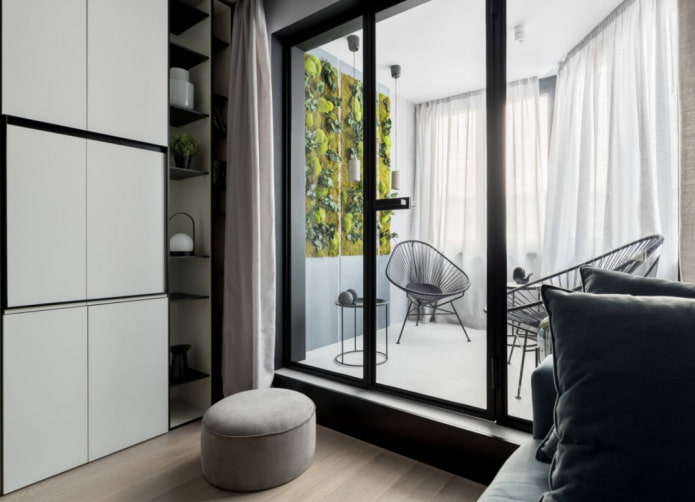
Design ideas
There are many ways of vertical gardening, the appropriate one is chosen based on the size and functionality of the room.
In the interior of the living room, a phyto-panel or a painting in a wooden frame is hung above the sofa, the wall, on the contrary, is placed opposite the sofa or window. A mobile modular system is convenient for zoning, for example, separating the bedroom side from the living room in a studio apartment.

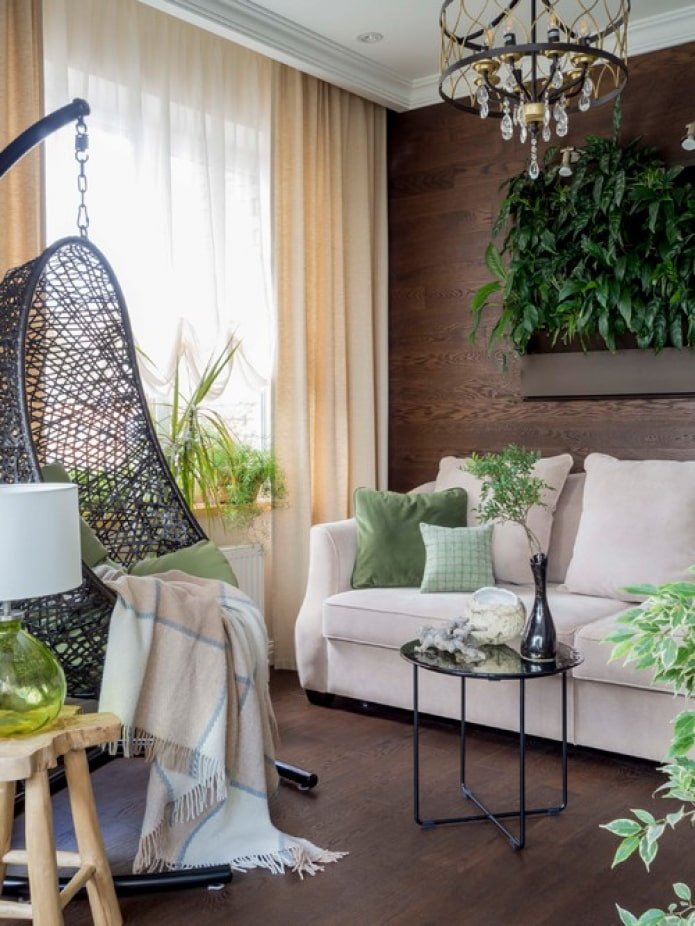
The room where good air is most needed is the bedroom. Choose plants for this room carefully: monstera, for example, is famous for its night-time oxygen absorption.

There is free space for vertical landscaping of the kitchen in the dining area. But for many, the idea of herbs in the cooking area will be relevant: it is not only beautiful, but also convenient.
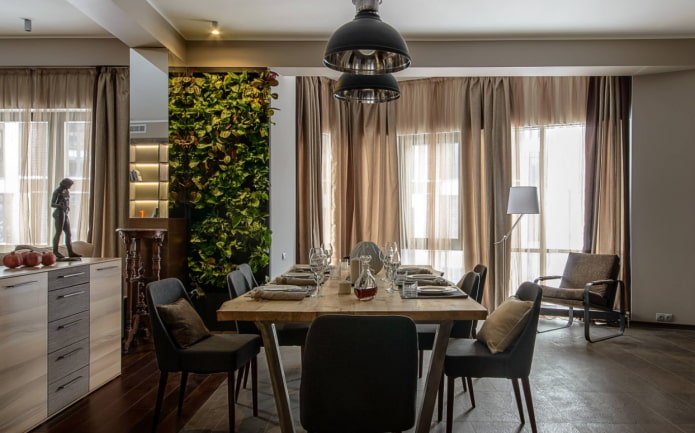
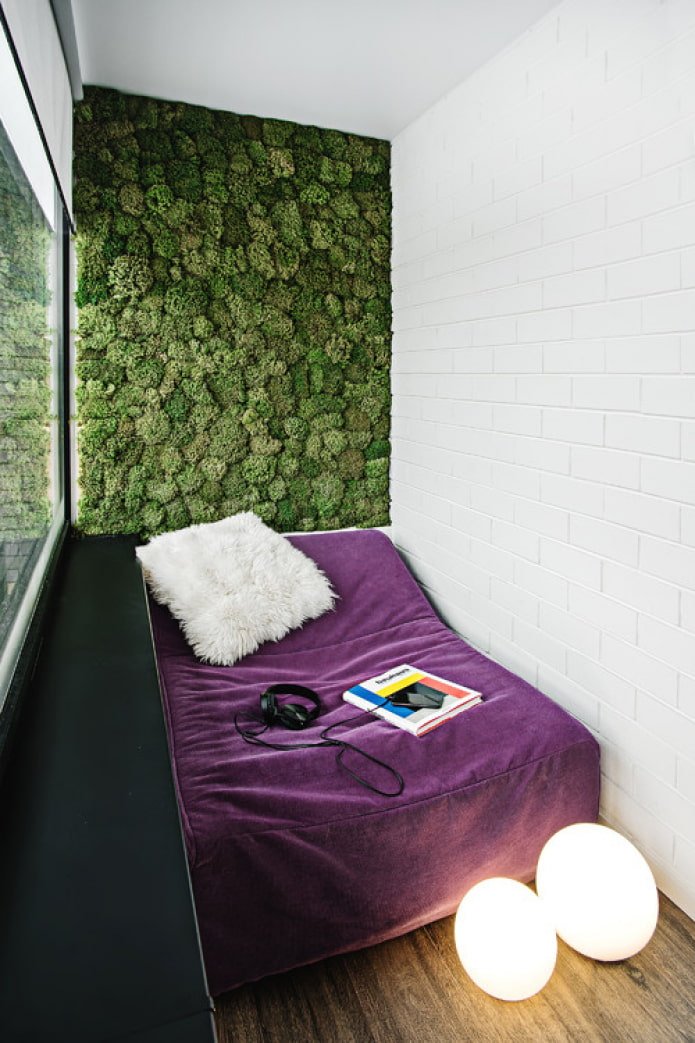
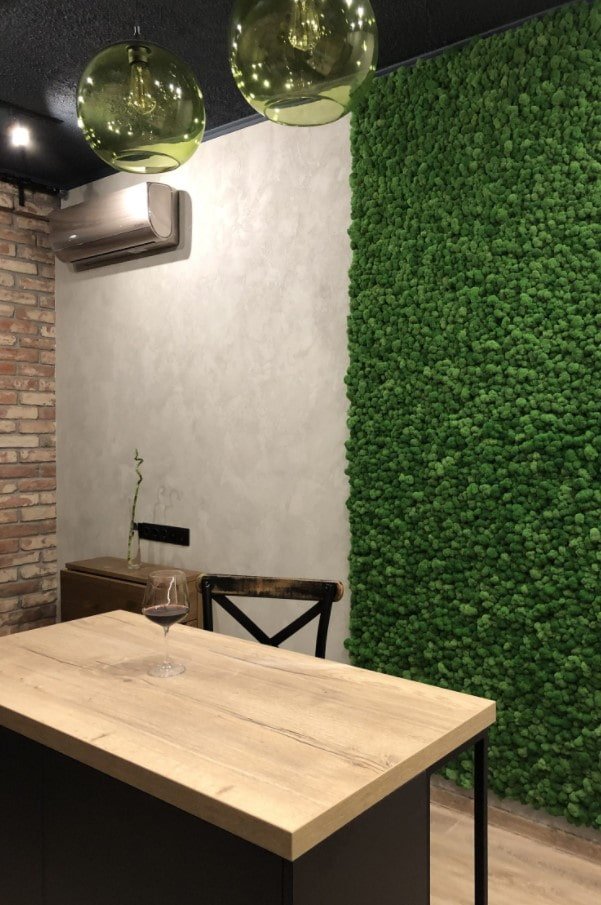
Moss will thrive in the wet area of the bathroom with a constantly high level of humidity (the bath, shower area). Moisture-loving scindapsus and spathiphyllum are used for vertical landscaping in the apartment near the sink or toilet.

Caring for flowers can become an easy household chore that will help teach a child responsibility. Small and adult children will love colorful bright succulents – they look stylish and require almost no care.
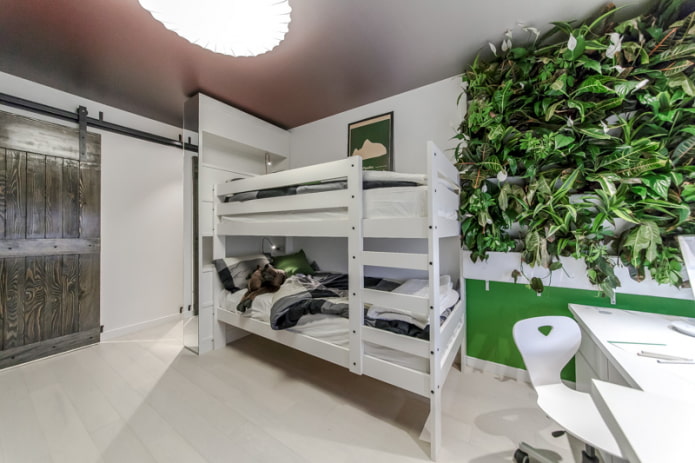
You can create a wall or a panel of greenery yourself, but if you have no experience in caring for flowers, it is better to entrust the selection and planting to professionals. Designers will do the main work and advise on further care to preserve the resulting beauty.
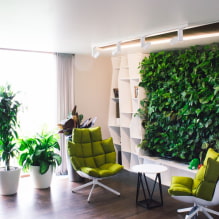
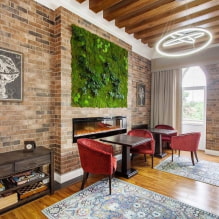
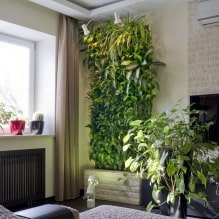
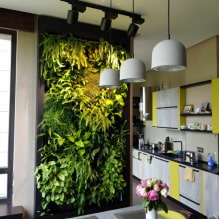
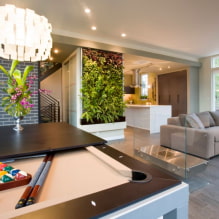
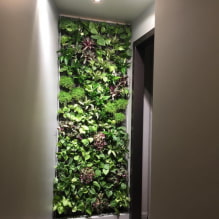
Now reading:
- tips for caring for leather furniture: how to keep it in perfect condition.
- Can you lay laminate in the kitchen? Rules and 46 photos for inspiration.
- TV in the kitchen: 47 ideas and examples of successful placement
- Kitchen design in a country house: ideas and 40 photos for inspiration.
- Organizing furniture in the kitchen: convenient solutions and basic principles.